Technovation Girls started running almost 10 years ago, which means we have 10 years worth of data about the problems that matter most to young people — especially girls. It turns out they want to solve the same problems as the UN General Assembly.
Five years ago in Rio de Janeiro, the United Nations General Assembly put forth an ambitious global agenda they hoped would serve as “a shared blueprint for peace and prosperity” by 2030. At the heart of this 2030 Agenda for Sustainable Development are the 17 Sustainable Development Goals (SDGs). The goals are interlinked by design — you can’t separate quality education (Goal 4) from gender equality (Goal 5) or responsible consumption and production (Goal 12) from affordable clean energy (Goal 7). The UN Department of Economic and Social Affairs describes the SDGs as “an urgent call for action by all countries — developed and developing — in global partnership.” To hold themselves accountable, Member States signed off on specific targets and indicators to measure progress towards the 2030 deadline (and they’ve made it easy to learn how much progress the world has made on each goal since 2015).
Inspired by the SDGs, Technovation adopted an abbreviated version of the goals for the 2017 season of Technovation Girls. We asked teams to self-select the track their project fit into: poverty, the environment, peace, equality, education, or health. Since then we haven’t made the goals a necessary part of submission, but continue to feature them in the curriculum and categorize all submissions by SDG so we can understand what problems girls want to solve each year.
The SDGs guide students through the ideation process by framing issues through a global lens. Encouraging students to consider which goals affect their own communities — and how they affect other communities too — nudges them towards choosing a meaningful problem to solve.
The problems Technovation Girls wanted to solve in 2020

Since we started analyzing apps by SDG, we’ve found a clear pattern — Technovation Girls teams really care about issues related to health. (Our “health” category covers SDG Goals 2, 3, and 6: Good Health and Well-Being, Clean Water and Sanitation, and Zero Hunger.)
2020 continued this trend, with 42% of all teams developing technology to tackle health-related problems. This included apps to support Alzheimer’s patients, help people cope with depression, prevent skin cancer, encourage healthy eating, ease PTSD and more. Much more — there are over 700 other examples of health-related apps we could give you! While girls everywhere are committed to improving the health of their communities, this year’s regional analysis found teams from the Middle East leading the charge — 55% of all teams from the Middle East tackled health problems.
The next-most popular type of problem teams chose to solve in 2020 were those related to the environment — 20% of all 2020 Technovation Girls submissions addressed environmental issues. (This category includes SDG Goals 7 and 11-15: Affordable and Clean Energy, Sustainable Cities and Communities, Responsible Consumption and Production, Climate Action, Life on Land, and Life below Water). Region by region, 25% of teams in both Europe and North America built apps addressing environmental issues, as did 24% of teams in Latin America. Environmental problems are consistently top of mind for Technovation Girls participants. The environment was also the second-most popular problem teams chose to solve in 2019, 2018, and 2017.
The remaining portion of apps addressed a range of issues — 9% of Technovation Girls teams addressed equality and 9% of teams addressed Poverty. 6% of teams addressed peace, and 7% of teams addressed education. The remaining 7% of teams addressed problems that don’t fit neatly into our 6 categories but still matter a great deal, including issues related to Goal 9: industry, innovation and infrastructure.
Problems of interest by region
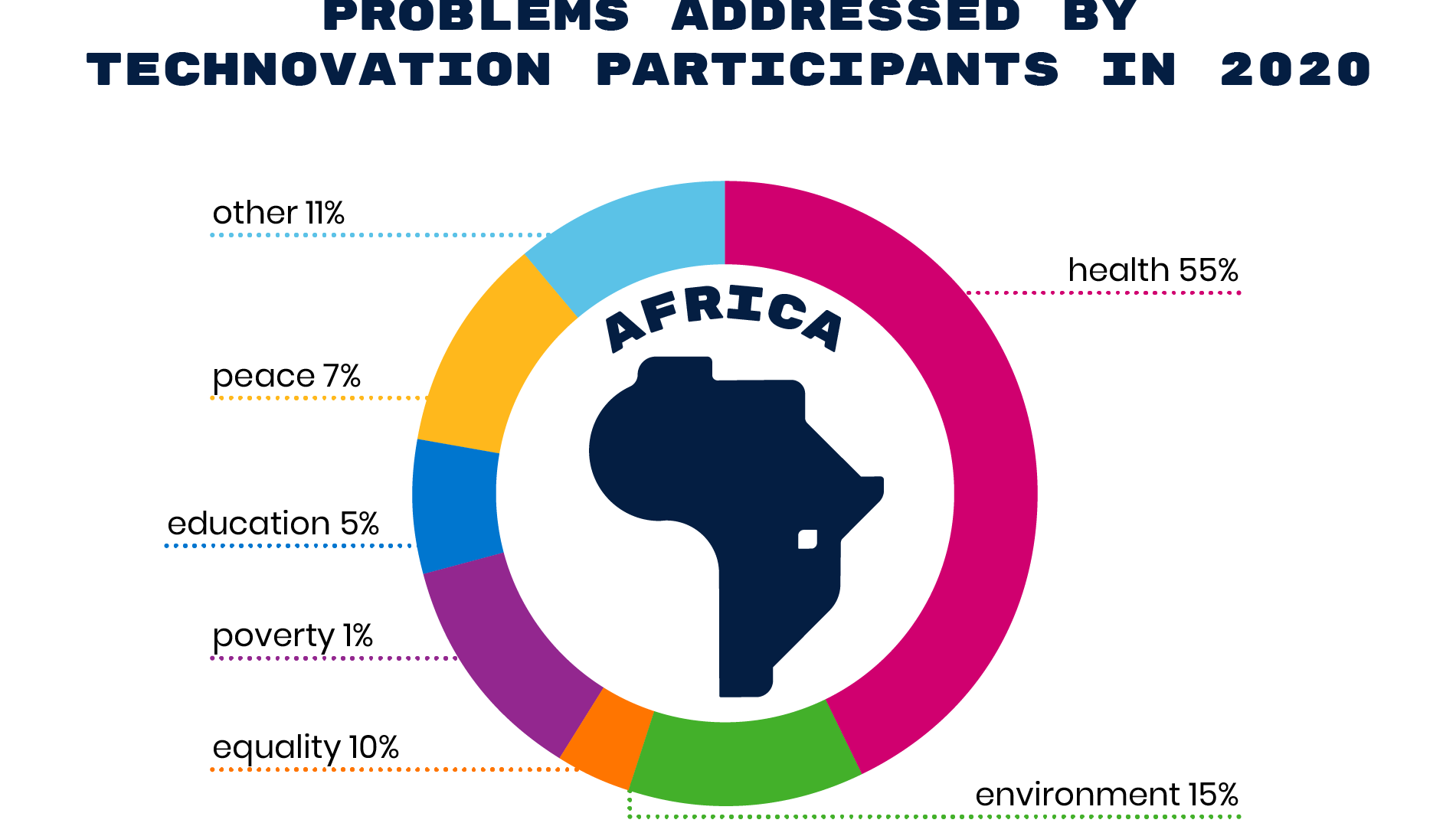 |
<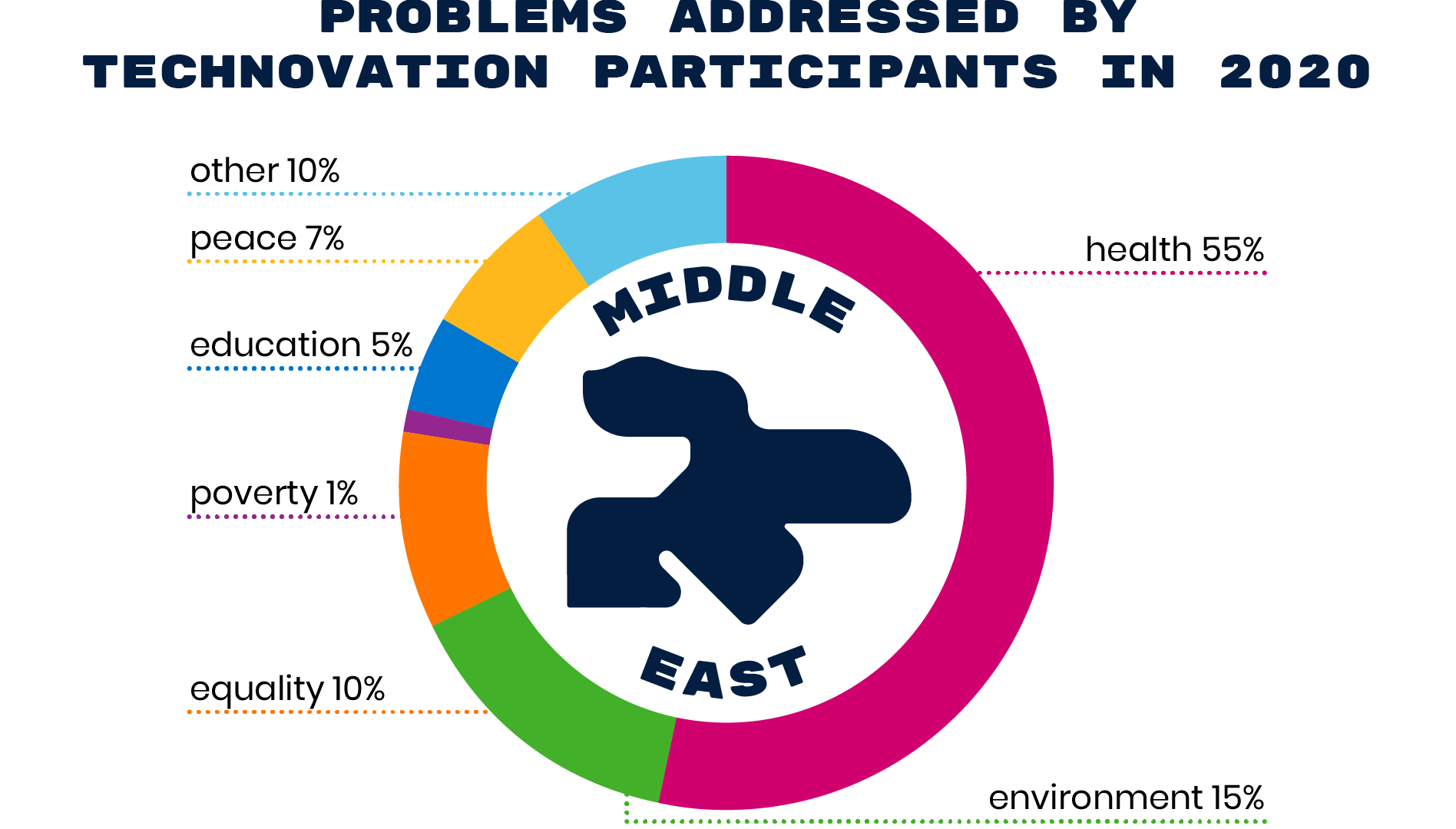 |
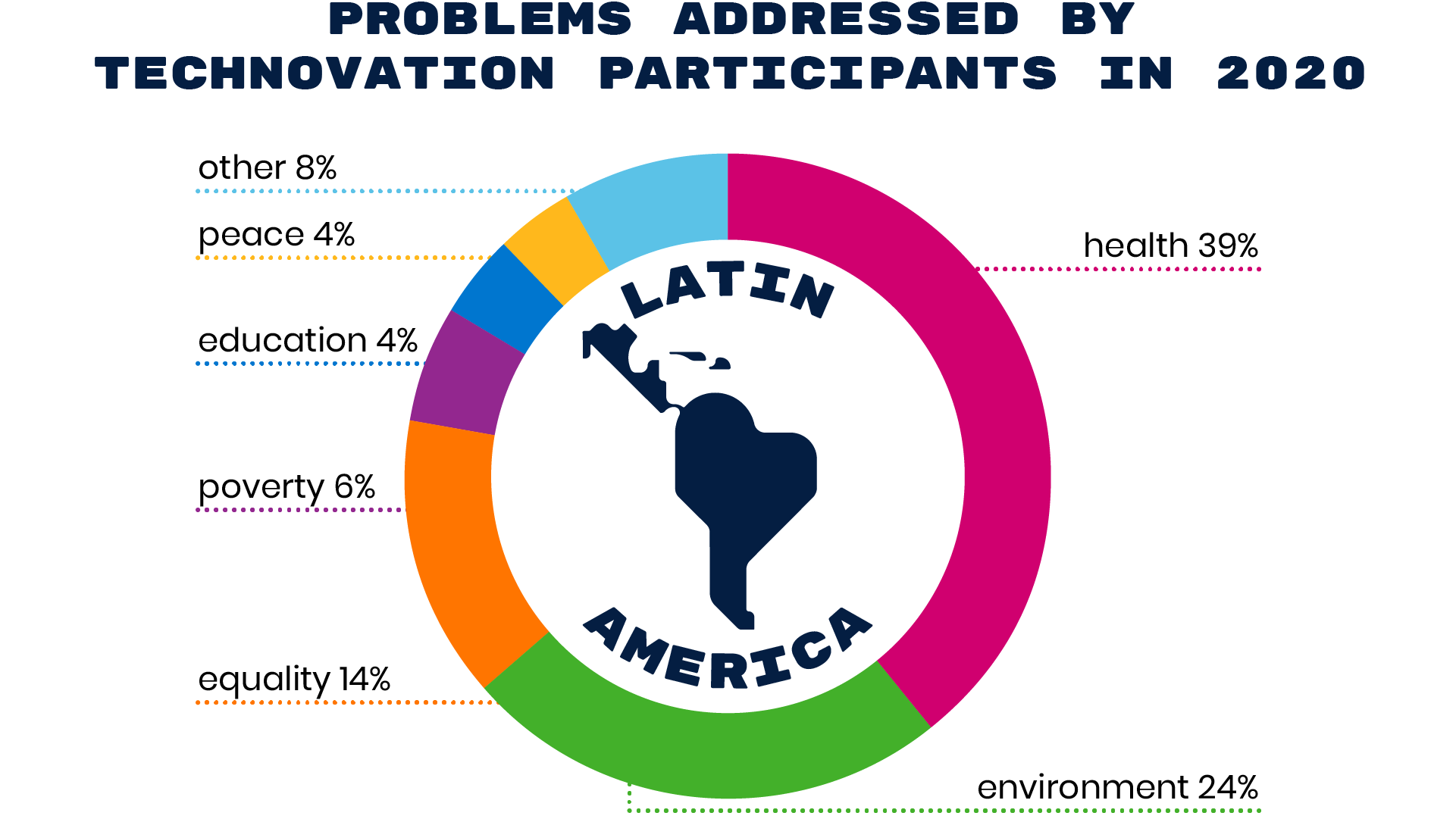 |
Although tech solutions to health and environmental problems make up more than half of all submissions in every region, there are some regional differences in the problems teams choose to solve. For instance, more teams in Africa (11% of all apps from the region) addressed issues related to peace compared to other regions, while more teams in Asia & Oceania focused on education (10% of all apps in the region) than anywhere else. Asia & Oceania teams also led the season in addressing poverty (14%). Teams in Latin America led the way in addressing issues related to equality (14%) this season.
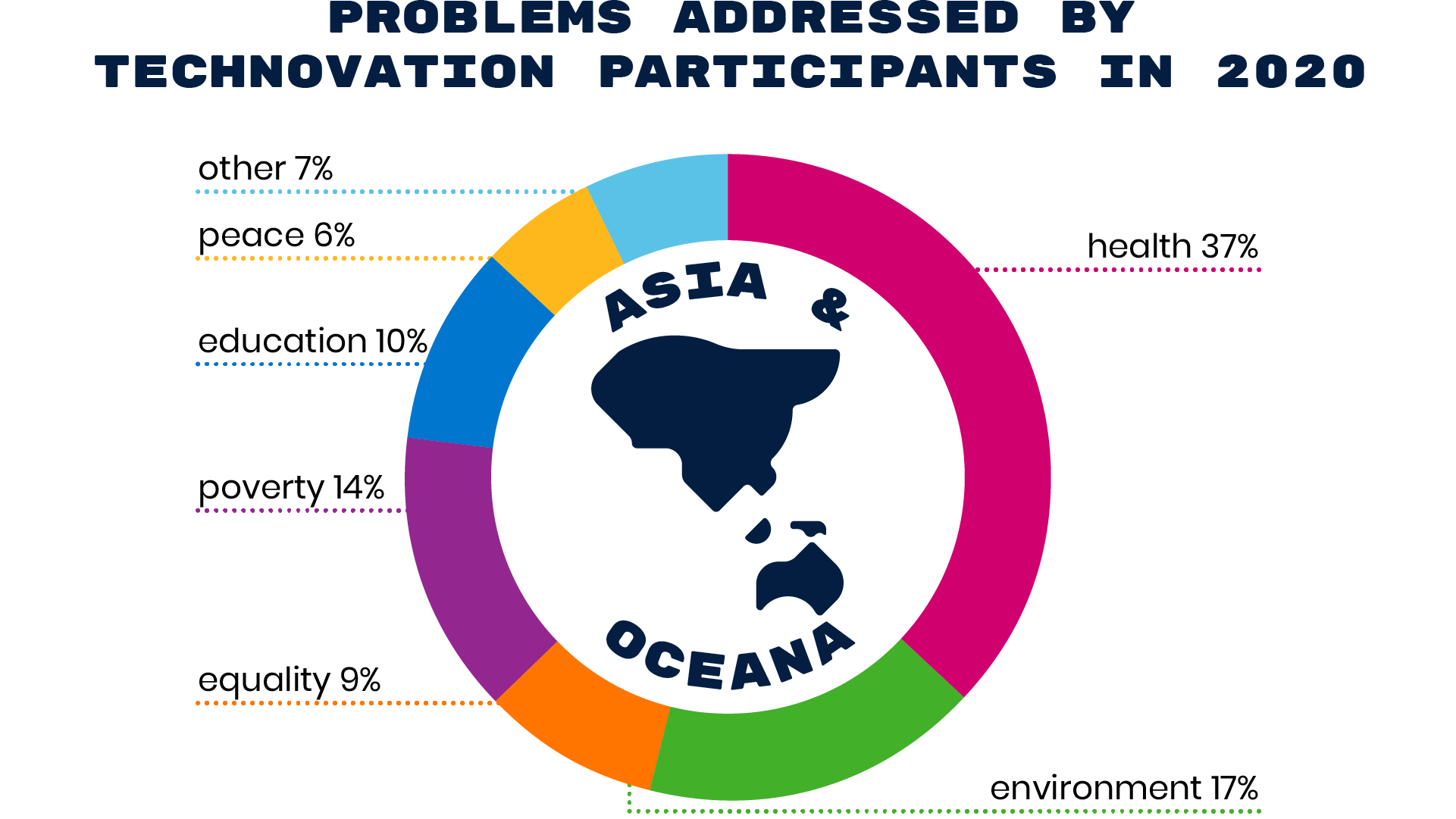 |
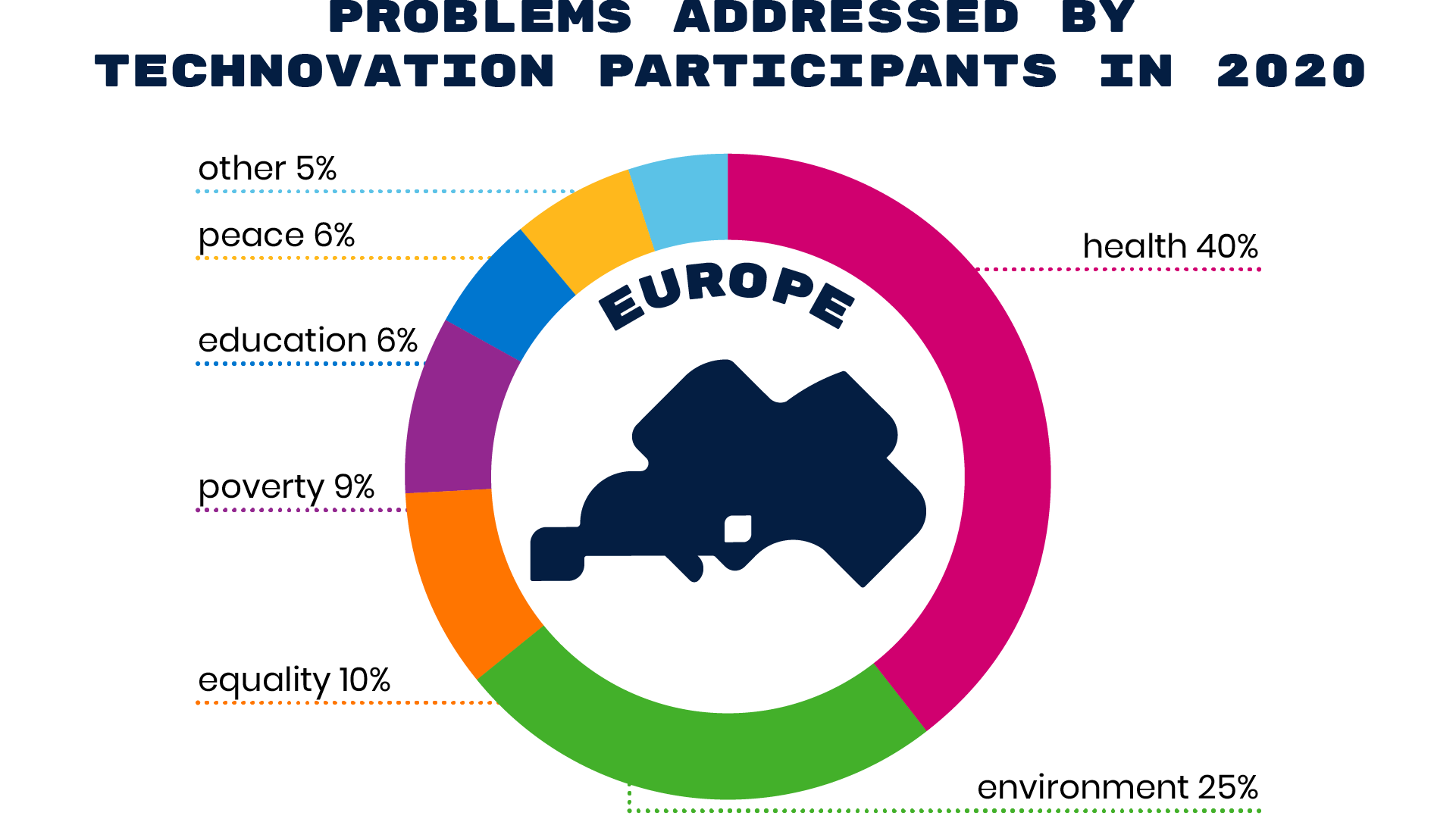 |
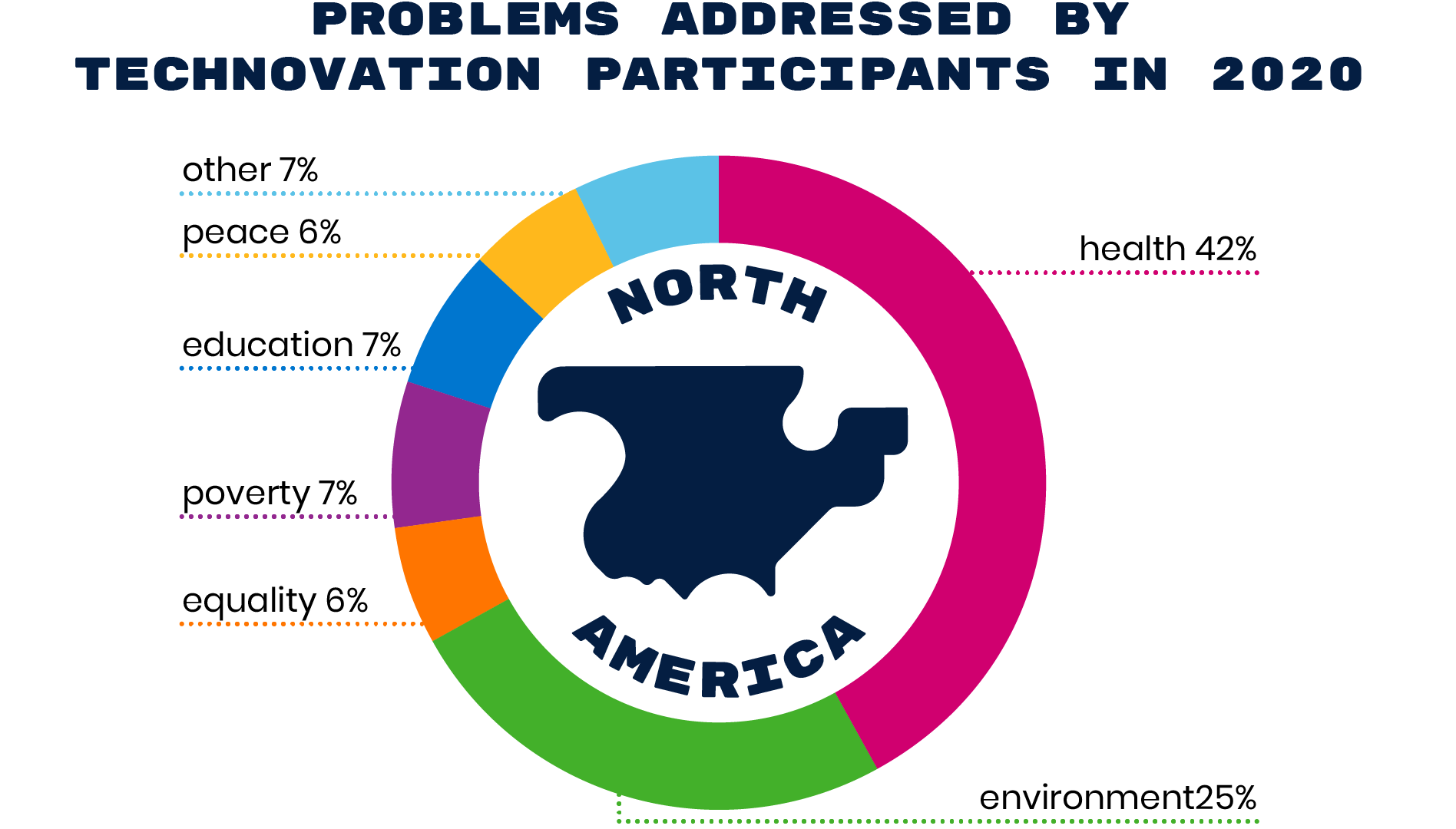 |
We love to see what problems matter to girls and where certain issues particularly resonate. But we also see the bigger picture, which is that girls everywhere care deeply about A LOT of problems. And we should listen to them when they tell us why. Technovation Girls teams tackle enormous issues every year — they’re ready to dive in and start building better communities and a better world. We love learning about the problems that matter the most to young people around the world and seeing all the different ways they choose to solve those problems. Young people must be part of the conversations we’re having today about the future we’re shaping with our actions. They’re already building it.

